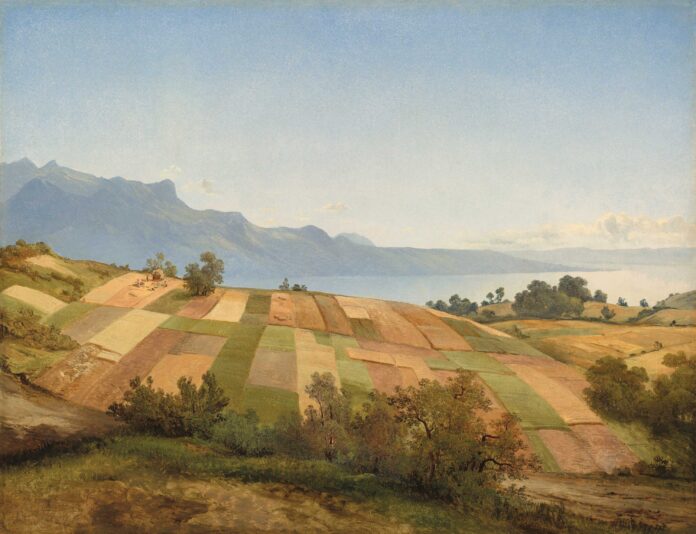
As a plein air artist, you are part of one of the largest art movements in history. Learn about those who have helped start this movement in some way, and be inspired to continue your own journey of landscape painting. For even more inspiration, subscribe to PleinAir® Magazine.
Our Plein Air Heritage
A devout Calvinist, Alexandre Calame (Swiss, 1810–1864) saw the large-scale, dramatic Alpine scenes he was known for as expressions of the divine. At their core, however, the paintings demonstrate the artist’s deep natural connection to the land.
As a committed member of the Düsseldorf school of painting, Calame advocated working en plein air. At his death, nearly 600 small paintings and studies never meant for public view were found in the artist’s studio. Among them, “Swiss Landscape” (shown above).
In this piece, Calame eschews the scenes of snow-capped peaks that dominate his oeuvre in favor of a quieter view of the landscape. Rather than forbidding and awe-inspiring, the effect is warm and inviting. A group of harvesters toil among the fields — a neat patchwork of greens and golds. The mountains and lake have been simplified into shapes of color, echoing the geometry of the landscape. Here, the artist does not celebrate the power
of nature, but rather its quiet, subtle beauty bathed in a gentle light.
> Subscribe to Plein Air Today, a free newsletter for artists



